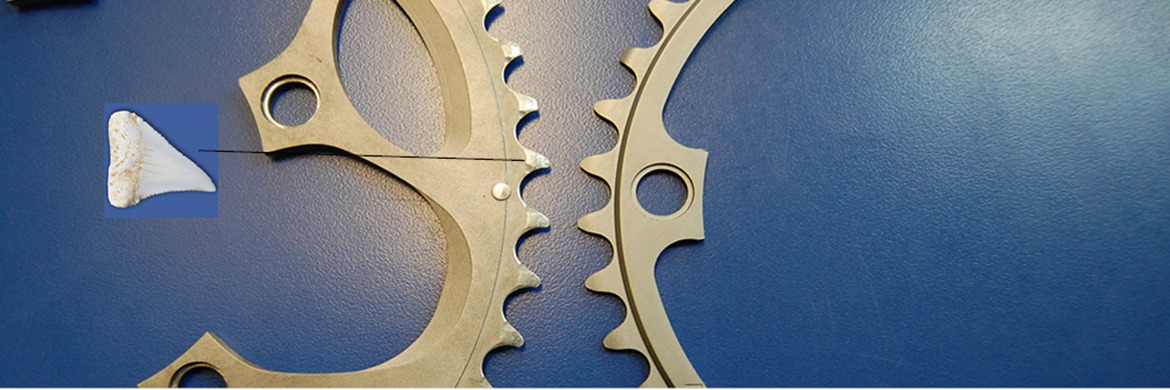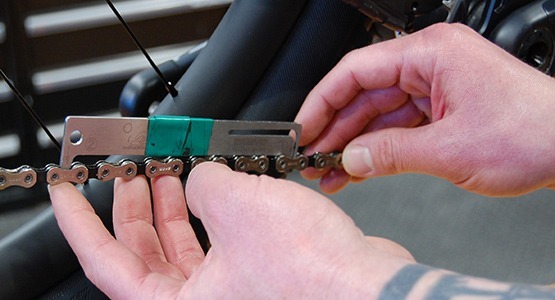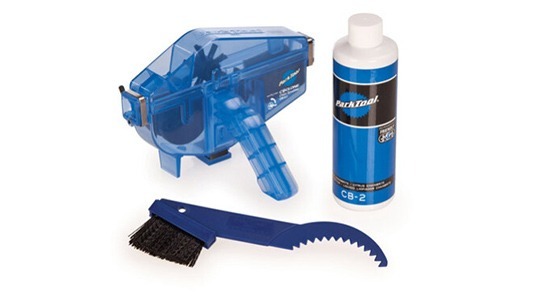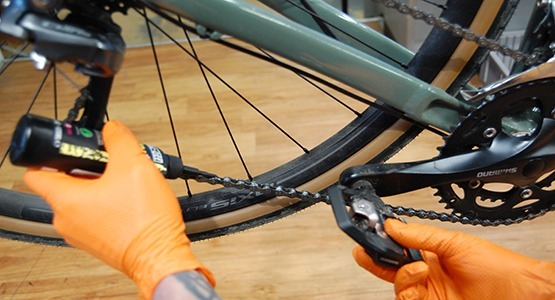all about chain maintenance
By Evan Lee
It’s the workhorse of the bike, the one part that makes it all happen, the part without which the bike will not operate. For such a seemingly simple piece of equipment, the bike chain is surprisingly technical. It has the most moving parts of anything on the bike!
Yet it’s the one part that often gets neglected, especially by riders new to cycling. When WRC service writers do an assessment of bikes brought in for work, chain measurement is always performed so we can show you what you need to know about this critical piece.
chain wear
Bicycle chains are a consumable product, just like tires, handlebar tape, and grips. Chain wear is known as stretch. The interface of the chain and the teeth of the cogs and rings is a precise fit. Over time, the chain plates stretch ever so slightly and the rollers don't engage the teeth cleanly. Riding your bike with a worn chain will prematurely wear out your cogs and rings, which are wildly more expensive to replace than your chain.
So what do worn gear teeth look like? You'll sometimes hear our techs say "That chainring is sharktoothed" because that's pretty much how they look. The chain is pulling on the back of each tooth as you pedal and over time the metal wears on that side, creating a profile that looks like a shark tooth. Each month of the busy season, we have buckets of them that go to metal recycling.
Look at the photo below -- the ring on the left is worn, the ring on the right is new. Note the profile of the teeth in comparison.


measuring
The tool at right is a chain wear indicator. See how it won't quite make the distance to drop into the chain on one end? That's because the chain is new and good. When the indicator drops into the chain and rests evenly on it, it shows the chain has worn and needs to be replaced.

cleaning
Regular cleaning of your chain will prolong the life of your expensive drive train components. Chains are down there by the ground, doing all the work and getting hammered by contaminants. Much of that contamination is composed of grit that grinds away at the metal at a microscopic level, accelerating wear. As described above, the chain wears, the chain’s interface with the cogs and rings is compromised, thus prematurely wearing those expensive components.
Regular cleaning will also improve performance. A contaminated chain will create drag, which translates in to you working harder. Friction studies have been performed to measure this exact thing and the results are intriguing enough to compel you to maintain chain cleanliness.
Keeping a chain clean has become quick and easy with modern tools such as the Park Tool Chain Gang

lubing
From drip lubes to sprays to waxing, options for lubing your chain are abundant. Determining the type of lube and application process is largely dictated by where and how you ride, along with the desired results.
In general, drip lubes are the easiest with which to work and are the most commonly employed. It's what our techs use at every bench, so never fear!
Application of drip lubes:
Hold the lube bottle in the position shown and drizzle it on as you move the chain through its path. Let it soak in AND wipe off the excess.
Don't overdo it! Too much of a good thing is exactly that, and in the case of an over-lubed chain it can attract dirt and debris, which will lead to premature wear of the chain, cassette, and rings.
science for the discerning bike nerd
Naturally, over the course of history regarding what is arguably humanity's noblest invention, the bike world has inspired deep exploration into bike efficiency. In 150 years, we've gone from wooden rims and single speed fixed gears, to the invention of the derailleur, to tire compounds, to carbon fiber.
But none of that means a thing without a chain to drive it. And we are still looking at ways of improving that oh-so-essential part and how we manage its care and feeding. Thankfully, Adam Kerin has taken years of research and created a web resource that will help you with all the science there is to know on this subject.
Behold! The greatest internet rabbit hole of bicycle chain science, research, and data ever created:
